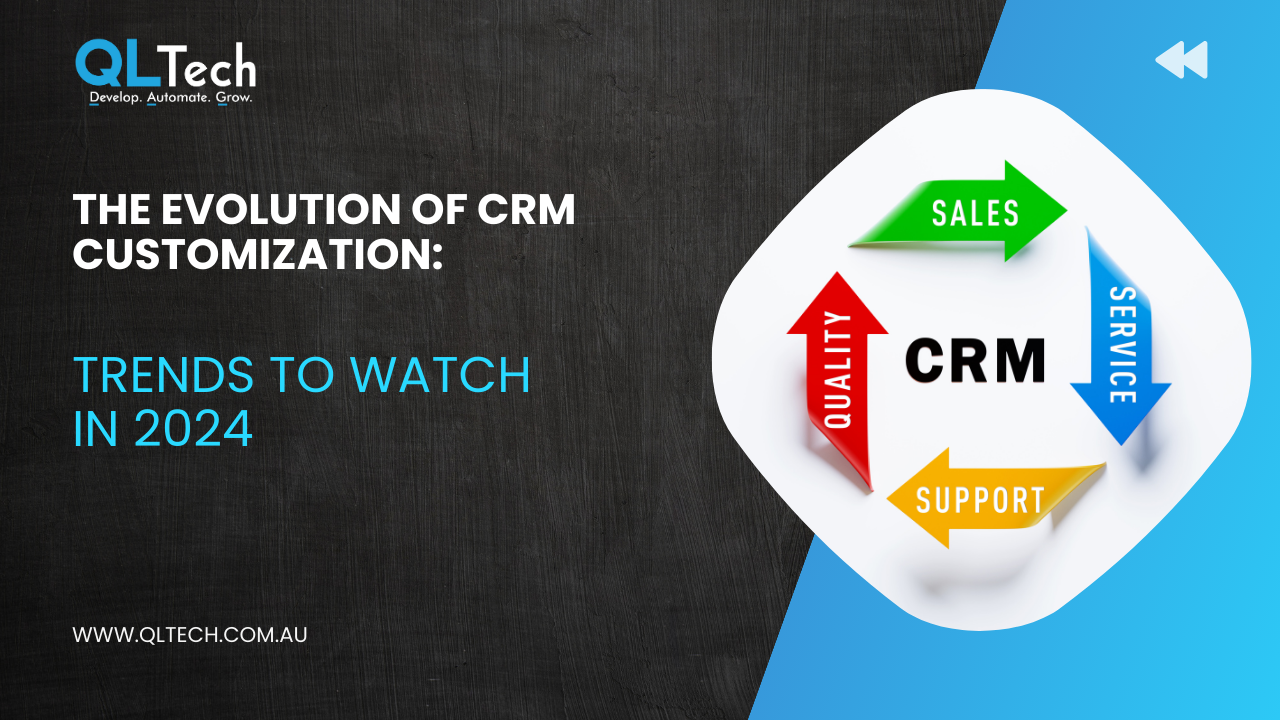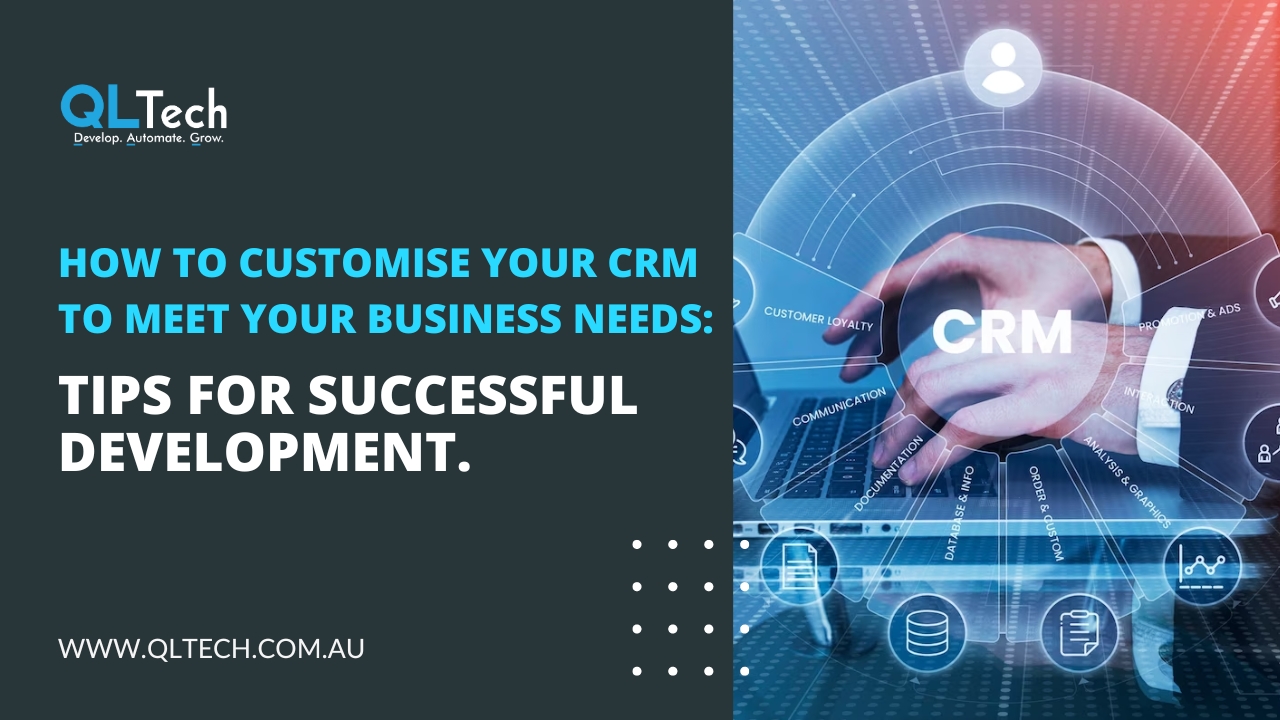Customer Relationship Management (CRM) systems have undergone significant evolution over the years, adapting to the changing needs and preferences of businesses and customers alike. In 2024, CRM customisation continues to be a pivotal aspect for businesses looking to tailor their CRM solutions to specific requirements and maximise their effectiveness. This article explores the latest trends in CRM customisation and highlights key developments to watch in 2024.

-
- AI-Powered Personalisation:
In 2024, AI-powered personalisation takes center stage in CRM customisation. Businesses leverage artificial intelligence and machine learning algorithms to analyse customer data, predict behaviors, and personalise interactions at scale. AI-driven CRM systems automatically segment customers based on their preferences, purchase history, and browsing patterns, enabling targeted marketing campaigns, personalised recommendations, and tailored customer experiences.
-
- Modular Customisation Frameworks:
Modular customisation frameworks emerge as a trend in 2024, offering businesses greater flexibility and agility in customising their CRM solutions. Rather than relying on monolithic CRM platforms, businesses adopt modular architectures that allow them to mix and match modules and functionalities to meet their specific needs. Modular CRM solutions enable rapid customisation, seamless integration with existing systems, and scalability to accommodate evolving business requirements.
-
- Low-Code/No-Code Customisation Tools:
Low-code and no-code customisation tools gain traction in 2024, empowering business users to customise CRM workflows, interfaces, and processes without the need for extensive coding knowledge or IT intervention. These intuitive drag-and-drop tools enable users to create custom fields, workflows, and reports, accelerating CRM customisation cycles and reducing reliance on IT resources. Low-code/no-code platforms democratise CRM customisation, enabling business users to innovate and iterate more efficiently.
-
- API-First Approach to Integration:
An API-first approach to integration becomes increasingly prevalent in CRM customisation in 2024. Businesses prioritise CRM solutions with robust APIs that facilitate seamless integration with third-party applications, data sources, and services. By adopting an API-first strategy, businesses can create interconnected ecosystems that consolidate customer data from disparate sources, enhance data visibility and accessibility, and enable real-time collaboration across departments and systems.
-
- Voice and Conversational Interfaces:
Voice and conversational interfaces emerge as key customisation trends in CRM systems in 2024. Businesses integrate voice-enabled features and chatbots into their CRM solutions to facilitate natural language interactions and automate routine customer interactions. Voice-driven CRM interfaces enable hands-free access to CRM data and insights, streamline data entry and updates, and enhance productivity for sales and customer service teams.
-
- Blockchain for Data Security and Transparency:
Blockchain technology finds applications in CRM customisation for enhancing data security and transparency in 2024. Businesses leverage blockchain-based solutions to encrypt customer data, secure transactions, and maintain an immutable audit trail of CRM activities. By implementing blockchain-powered CRM solutions, businesses ensure data integrity, protect against cyber threats, and demonstrate transparency and compliance with data protection regulations.
-
- Real-Time Analytics and Insights:
Real-time analytics and insights capabilities are integral to CRM customisation in 2024. Businesses deploy advanced analytics tools and dashboards within their CRM systems to gain real-time visibility into customer behaviors, trends, and preferences. Real-time analytics empower businesses to make data-driven decisions, identify opportunities for upselling and cross-selling, and proactively address customer needs and concerns.
-
- Hyper-Personalisation and Predictive Analytics:
Hyper-personalisation and predictive analytics capabilities continue to evolve in CRM customisation in 2024. Businesses leverage advanced predictive analytics algorithms to anticipate customer needs, recommend personalised offers, and deliver hyper-targeted marketing campaigns. By harnessing the power of predictive analytics, businesses enhance customer engagement, foster loyalty, and drive revenue growth through more meaningful and relevant interactions.
Conclusion: In 2024, CRM customisation evolves to meet the demands of businesses striving to deliver exceptional customer experiences and drive competitive advantage. From AI-powered personalisation and modular customisation frameworks to low-code/no-code tools and blockchain-enabled security, businesses leverage a diverse array of customisation trends to tailor their CRM solutions to specific needs and objectives. By embracing these trends and staying at the forefront of CRM customisation innovation, businesses can unlock new opportunities for growth, differentiation, and success in an increasingly dynamic and customer-centric marketplace.
